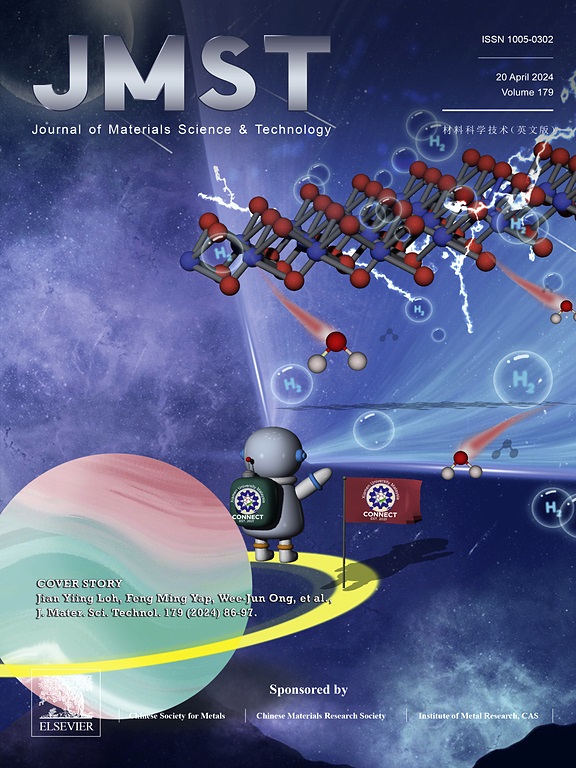Microstructure evolution during superelastic cycles and related elastocaloric effect in N-doped Ti-based shape memory alloys
IF 11.2
1区 材料科学
Q1 MATERIALS SCIENCE, MULTIDISCIPLINARY
引用次数: 0
Abstract
The superelasticity and elastocaloric effect (eCE) in N-free Ti-Nb-Zr-Ta alloy and 0.6N(at.%)-doped Ti-Nb-Zr-Ta alloy were comparatively studied. It was found that nitrogen doping played roles in elevating β→α transition temperature, refining grain sizes, homogenizing microstructure and altering dominant texture index. The N-free Ti-Nb-Zr-Ta alloy exhibited a temperature change of +6.7/−6.5 K during loading/unloading processes in the first superelastic cycle, but gradually decreased to +5.7/−5.2 K in 200th cycle owing to the accumulation of newly codirectional dislocation lines and the following single-system dislocation slip during cyclic tests. By contrast, the N-doped alloy showed a lower initial temperature change of +3.7/−3.1 K but increased to +4.6/−4.1 K in 200th cycle due to the extra caloric effect generated from nanoscale O' phase to α'' phase which experienced reorientation to favorable variants in early cycles. Residual α'' phase laths derived from stress-induced martensitic transformation (SIMT) appeared in both alloys after tensile cycles. The phase interface between β and α’’ phase was determined to behave a terraced shape, a type of interface compromising the reversible martensitic transformation (MT) and stabilization of martensite phase. The amount of nanodomains (O' phase) in regions situated at a distance from martensite significantly increased after cycles in both alloys, which accounted for the quickly reached stable superelastic deformation and much narrower hysteresis after the first cycle. Therefore, in light of the reproducibility and reversibility of elastocaloric performance in practical application, N-doped β-Ti shape memory alloys (SMAs) are promising candidate materials.

求助全文
约1分钟内获得全文
求助全文
来源期刊

Journal of Materials Science & Technology
工程技术-材料科学:综合
CiteScore
20.00
自引率
11.00%
发文量
995
审稿时长
13 days
期刊介绍:
Journal of Materials Science & Technology strives to promote global collaboration in the field of materials science and technology. It primarily publishes original research papers, invited review articles, letters, research notes, and summaries of scientific achievements. The journal covers a wide range of materials science and technology topics, including metallic materials, inorganic nonmetallic materials, and composite materials.
 求助内容:
求助内容: 应助结果提醒方式:
应助结果提醒方式:


